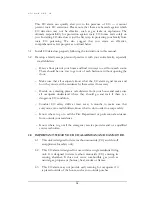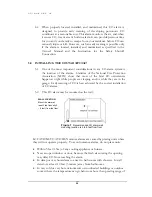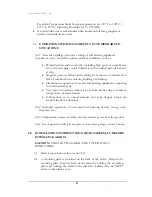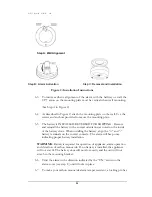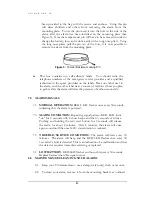
U N I Q U E U G P 1 3
8
1.
Min Setting on the Gas Thermostat:
In gas operation, the thermostat closes its main
port and the burner runs continuously at the bypass rate or pilot flame (turn fully counter
clockwise).
WARNING:
If left at this setting for a prolonged period of time, the fridge will defrost!
2.
“MAX” Setting of the Thermostat:
In gas operation, the thermostat allows the
burner to remain on high flame continuously. (Turn clockwise)
3. The thermostat can be adjusted between “Max” and “Min” to obtain the desired fridge
temperature.
When the thermostat reaches the set temperature, it will reduce the burner back to bypass
operation.
The setting of the thermostat is critical; we recommend it be adjusted to maintain a dry
frost on the cooling fins (approx. 38
Fahrenheit or 3
Celsius). Adjust the thermostat
knob closer to “Max” (clockwise) when the ambient temperature rises.
How to Use the Refrigerator
FOOD STORAGE COMPARTMENT
The food storage compartment is completely closed and unventilated, this is necessary to
maintain the required low temperature for food storage. The coldest areas in the
refrigerator are under the cooling fins and at the bottom of the refrigerator. The warmer
areas are on the upper door shelves. This should be considered when placing different
types of food in the refrigerator.
FROZEN FOOD STORAGE COMPARTMENT
Quick freeze soft fruits and ice cream should be placed in the coldest part of the
compartment which is at the bottom of the aluminum liner. Frozen vegetables may be
stored in any part of the compartment.
This compartment is not designed for deep or quick freezing of food. Meat or fish,
whether raw or prepared, can be stored in the frozen food storage compartment provided
they are pre-cooled in the refrigerator. To prevent food from drying out, keep it in
covered dishes, containers, plastic bags or wrapped in aluminum foil.
Defrosting
Frost will gradually accumulate inside the refrigerator and freezer surfaces. It must not be
allowed to grow too thick as it acts as an insulator and adversely affects the refrigerator
performance. Check the formation of frost every week and when it exceeds 3/8” thick,























